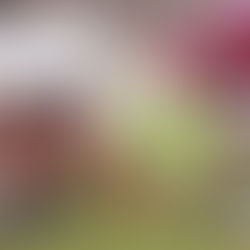Basketball Injury Prevention
(Article source: www.StopSportsInjuries.org)
Modern basketball is a fast paced game with many opportunities for injury. It is estimated that more than 1.6 million injuries are associated with basketball every year.
SOME OF THE MOST COMMON BASKETBALL INJURIES INCLUDE:
Jammed Fingers
Ankle Sprains
Deep Thigh Bruising
Knee Injuries
Foot Fractures
Facial Cuts

HOW ARE BASKETBALL INJURIES TREATED?
Jammed Fingers
Jammed fingers occur when the ball contacts the end of the finger, causing significant swelling of a single joint. Application of ice and taping to the adjacent finger may provide some relief and allow the athlete to return to play. If pain and swelling persist, evaluation by a physician or athletic trainer is recommended. An x-ray of the finger may also be needed.
Ankle Sprains
Ankle sprain treatment involves rest, ice, compression, and elevation (RICE). A doctor's evaluation and need for X-rays is determined on a case by- case basis, considering the severity and location of pain. Pain and swelling over the bone itself may need further evaluation. An injury to the ankle in a child who is still growing could represent a simple sprain. However, it could also be the result of an injury to the growth plates located around the ankle, in which case it should be evaluated by a physician.
Deep Thigh Bruising
(RICE) rest, ice, compression, and elevation treatment is recommended for bruising. Girdles with thigh pads are also available for protection.
Knee Injuries
The extensive stop and go and cutting maneuvers in basketball can put the ligaments and menisci of the knee at risk. Injury to the medial collateral ligament is most common following a blow to the outside of the knee. This can be often be treated with ice, bracing and a gradual return to activity.
An injury to the anterior cruciate ligament is a more serious injury. This often occurs as a result of an abrupt change in direction and landing for the jump. This ligament tear can be a season ending injury that requires corrective surgery. However, current techniques used to repair the ACL ligament can allow the player to return to play the following season.
Stress Fractures
Stress fractures may occur from overtraining, or a rapid increase in activity level or training. In basketball, these fractures most commonly occur in the foot and lower leg (tibia). Once diagnosed, a period of immobilization and non-weight bearing is recommended. The athlete is permitted to return to play once the fracture has completely healed and the athlete is pain free.
Facial Cuts
Depending on the depth of the injury, cuts may require a "butterfly" sterile tape or stitches. Ice may be used for pain relief and to decrease swelling. Players are permitted to return to play after all blood is removed and the wound has been properly dressed.
HOW CAN YOU PREVENT BASKETBALL INJURIES?
Keep up with a proper fitness routine - injury rates are higher in athletes who have not adequately prepared physically
Have a pre-season physical exam and follow your doctor's recommendations for injury prevention
Talk with a coach and/or athletic trainer about an ACL injury prevention programs and incorporating the training principles into team warm-ups
Adequate Hydration - waiting until you are thirsty is often too late, stay hydrated prior, during, and after activity
Take extra precaution in excessively hot and humid weather
Do aerobic conditioning, strength training, and agility training to gradually progress back into the sport after a period of inactivity.
Avoid overuse injuries! Many sports medicine specialists believe that athletes should take at least one season off each year.
Avoid over-training. Listen to your body and decrease your intensity if pain or discomfort develops.
After an injury, return to play only when clearance has been provided by a health care professional.


















